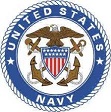Navy posts RFI for technology and innovation OTA
 On August 31, the U.S. Navy posted a request for information for the Navy Surface Technology and Innovation Other Transaction Authority Agreement (N00178-18-9-0001). Responses are due by 5:00 p.m. Eastern on October 4.
On August 31, the U.S. Navy posted a request for information for the Navy Surface Technology and Innovation Other Transaction Authority Agreement (N00178-18-9-0001). Responses are due by 5:00 p.m. Eastern on October 4.
The Naval Surface Warfare Center Dahlgren Division (NSWCDD), intends to issue a Request for Proposal (RFP) to competitively establish an Other Transaction Authority (OTA) Agreement with a single Consortium, a legal entity whose members will be comprised of both traditional and non-traditional defense contractors. The OTA, 10 U.S.C. § 2371b, allows the Department of Defense (DoD) to “carry out prototype projects that are directly relevant to enhancing the mission effectiveness of military personnel and the supporting platforms, systems, components or materials proposed to be carried out by the DoD, or to improvement of platforms, systems, components, or materials in use by the armed forces.” Constant innovation and rapid technology advances are occurring throughout the world. Partnerships with commercial industry, the civil maritime sector, and others will be used to leverage these approaches and increase flexibility and agility, reduce cost, improve technology and capability insertion, and decrease program development cycles.
OTA objectives include rapid development prototyping and testing that can be demonstrated in an operational environment and provide for a rapid fielding of an operational capability. A prototype project can generally be described as a preliminary pilot, test, evaluation, demonstration, or agile development activity used to evaluate the technical or manufacturing feasibility or military utility of a particular technology, process, concept, end item, effect, or other discrete feature. Prototype projects may include systems, subsystems, components, materials, methodology, technology, or processes. By way of illustration, a prototype project may involve: a proof of concept; a pilot; a novel application of commercial technologies for defense purposes; a creation, design, development, demonstration of technical or operational utility; or combinations of the foregoing, related to a prototype. The OTA offers an alternative to Federal Acquisition Regulation (FAR)‐based acquisitions, allowing for access to participation by non-traditional defense contractors with innovative solutions that may not normally desire to participate in government procurements.
The OTA Consortium model specifically allows for enhanced collaboration between Government and industry. The collaborative nature of this model also creates a longer‐term channel for the Government to capitalize on “technology push” by obtaining industry input and feedback on rapidly evolving technologies. The OTA Consortium model also fosters development of interoperable, modular, open architecture systems and prototypes that permit rapid, flexible technology upgrades and mission reconfiguration. Its emphasis on engaging non‐traditional technology suppliers casts a wider net for capturing ideas and innovations. For all companies, the model provides a process to have a voice and the ability to “weigh‐in” on critical technology issues and inform Government technology requirements. The OTA Consortium model also establishes a mechanism for creating technology transition partnerships between small technology innovators and large system integrators.
Requirement:
NSWCDD, is releasing this Request for Information (RFI) inform industry of an interest to establish a new Section 815 OTA Agreement with a consortium under the authority of 10 USC 2371b to develop and mature technologies to enable advanced approaches to maintaining maritime superiority, and to solicit feedback from industry on the proposed approach.
This includes:
-maturing technologies that assist in surface maritime dominance
-experimenting to better inform and equip the warfighter
-demonstrating new technologies to increase warfighting capabilities
-developing innovative solutions for surface lifecycle challenges across the spectrum
Full information is available here.
Source: FedBizOpps








